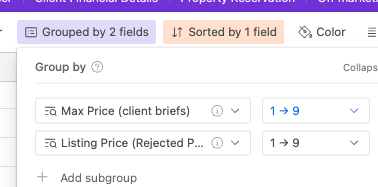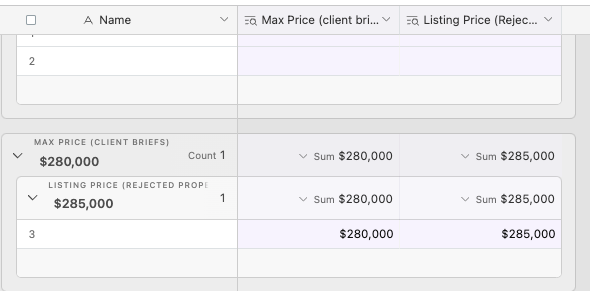Hey @Imee_Lee ! I think I've got an alternate solution for you. Recorded a Loom Video here to walk you through step by step 🙂
Essentially this is an automation that will link your Hit List Clients to your Rejected Properties, based on the Property Listing Price, and their Min/Max Purchase Budget. I'll show you my example here:
*** REMEMBER TO UPDATE ALL TABLE / FIELD / VARIABLE NAMES TO MATCH YOURS ***
Sample Base Setup:

Desired Output - Properties are now grouped by Hit List Clients that land in price range.
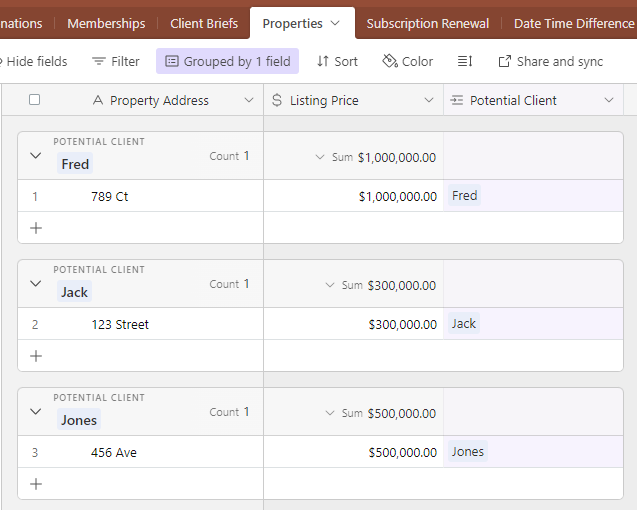
Automation Setup:
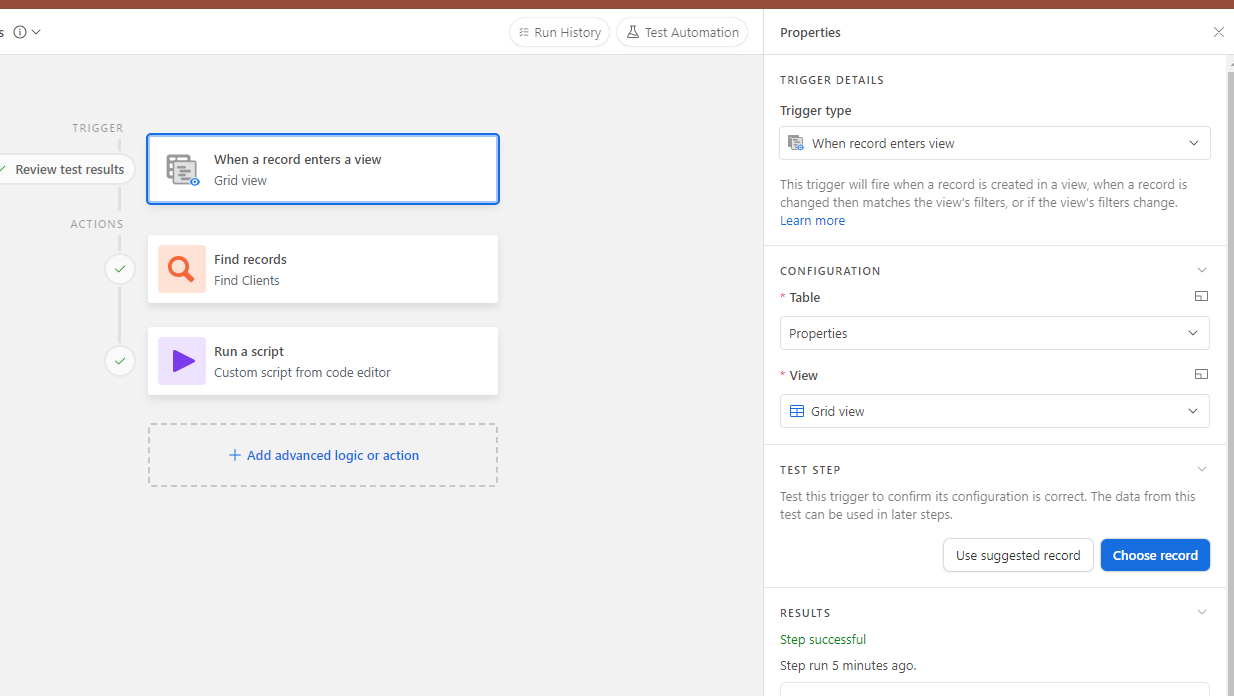

Script Input Variables:
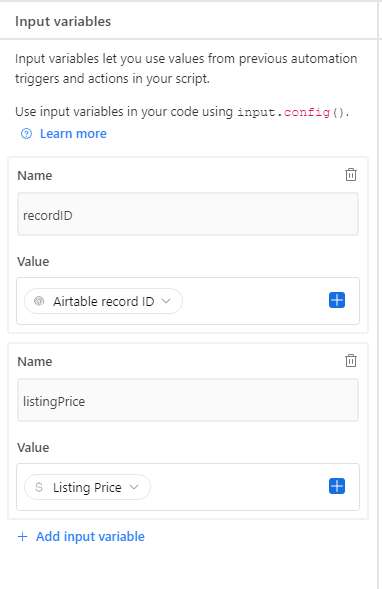
Script:
*** REMEMBER TO UPDATE ALL TABLE / FIELD / VARIABLE NAMES TO MATCH YOURS ***
// get property table
var propertyTable = base.getTable("Properties");
// get client table
var clientTable = base.getTable("Client Briefs");
var clientQuery = await clientTable.selectRecordsAsync({fields: ["Client", "Min Purchase", "Max Purchase"]})
var clientRecords = clientQuery.records;
// get input variables
var inputConfig = input.config();
// get properties input variables
var recordID = inputConfig.recordID;
var listingPrice = inputConfig.listingPrice;
var potentialClient = [];
for (var i = 0; i < clientRecords.length; i++) {
if (listingPrice >= clientRecords[i].getCellValue("Min Purchase") && listingPrice <= clientRecords[i].getCellValue("Max Purchase") ) {
potentialClient.push(clientRecords[i])
}
}
console.log(potentialClient)
// Update Potential Client Record
var updates = [{
"id": recordID,
fields: {
"Potential Client": potentialClient
}
}]
console.log(updates)
await propertyTable.updateRecordsAsync(updates);
Last thought : remember that the trigger of "Enters A View" will only trigger when there is a state change and a new property ENTERS the view. This means that any properties ALREADY in the rejected properties view will NOT trigger the automation. One way to solve this is to trigger them manually (like I did in the video). Or alternatively you could temporarily remove them from the view and re-add them. This will trigger the automation.
Let me know if this worked for you!!
